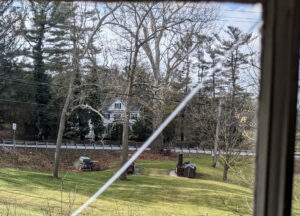
The photograph shown above was taken from the SW dormer window of the Union Mills home of Andrew K. (AK) Shriver. The window affords a sweeping view of the south lawn of the Shriver homestead, with a clear line of sight to the front yard of the home built by William Shriver. The brothers AK and William Shriver inherited their father’s (Andrew) milling complex and home farm in 1847.
On the plastered walls of the attic are several pencil sketches that appear to have been drawn during the Civil War. The drawings are crude, but their subjects are identifiable. One, located on the wall of the SW dormer recess, appears to be a sketch of the Shriver girls, daughters of both AK and William, playing in the yard. The three girls are dressed in hoop skirts typical of the 1860s, while their unknown companion (wearing boots) appears to be marching. In 1860, Anna, daughter of AK, was 12 years old, her brother Louis was 9, and the youngest, Helen, was 3. William’s youngest children were daughters Mary and Emma, who were 12 and 10 years old respectively. Given the view from the attic, this was likely a scene witnessed in the yards below.
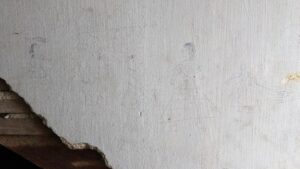
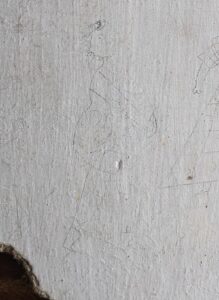
The SW dormer provided light for the attic room occupied by Harry Doer, who apparently arrived at the homestead in 1850 an enslaved boy of just 2 years old with his sister “Priss” (4 years) when his aunt Ruth Doer was purchased by AK Shriver. Louis E.Shriver, born in 1852 and the youngest son of AK and Catherine Shriver, grew up with Harry as a playmate, “as there were no boys in our family near my own age.” Louis recalled that Harry, his “chief and almost constant companion,” had his bedroom in the attic room “nearest the barn” lit by a dormer window. Presumably Ruth, Priss, and Ruth’s two children born later, occupied the adjoining attic room where, in 1857, Priss reportedly hid a stolen pocket watch under the floorboards. At the time of the 1860 census, Harry Doer was listed on the census “Slave Schedule” as an unnamed 12 year old male and Priss an unnamed 14 year old female. Louis Shriver remembered them as “pretty well grown up and able to work, if you could make them. Harry died at age 14 of a “fever” on August 12, 1862.
![1860 census Slave Schedule showing list of AR [K] Shriver's enslaved people, annotated with their names. (Ancestry.com)](https://develop.crossroadsofwar.org/wp-content/uploads/2024/09/1860-slave-census-300x178.jpg)
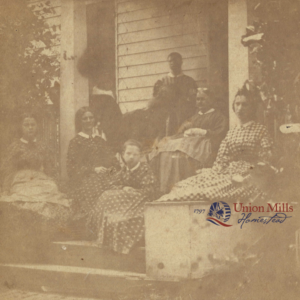
On November 1, 1864, Ruth, Priss, George, and Alice Doer were emancipated from their enslavement by the new Maryland Constitution which abolished slavery throughout the state. According to the 1870 census, it appears that Ruth and her family did not remain in Myers District (No. 3), where Union Mills was located, following their emancipation, though where they did go remains unknown.
The second sketch was more certainly drawn during the Civil War. Located…, it is a depiction of two men dressed as Civil War soldiers facing each other. One holds an American flag in front of him, representing the US army, while the other appears to hold a rifle with bayonet, apparently representing the Confederate army. A bird stands between the two figures. On the leg of the US soldier are the letters “E B S,” possibly indicating the author of the sketch, Eliza Brengle Shriver, 20 year old daughter (in 1860) of AK and Catherine Shriver.
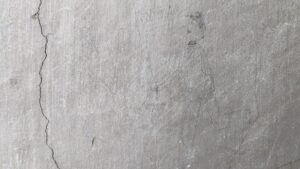
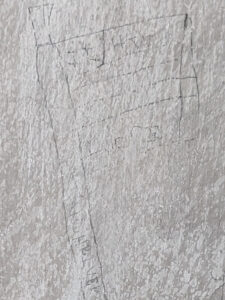
The flagstaff is inscribed with the name “AK Shriver” while the top stripe of the flag holds the initials “H W.” AK Shriver was too old to serve during the Civil War, but his son Henry Wirt Shriver joined a company ofPennsylvania volunteers in June 1863, in response to the Confederate threat. An inscription on the bottom strip of the flag appears to read “Lucre,” meaning “profit.” The AK and William Shriver families spent the duration of the war at odds over the sectional division.While AK Shriver and family supported the federal Union, William Shriver and his family were firm supporters of the Confederacy, with four sons enlisted in the Confederate Army. (see Civil War Stories: “Divided Families: The Shriver Brothers of Union Mills”)
